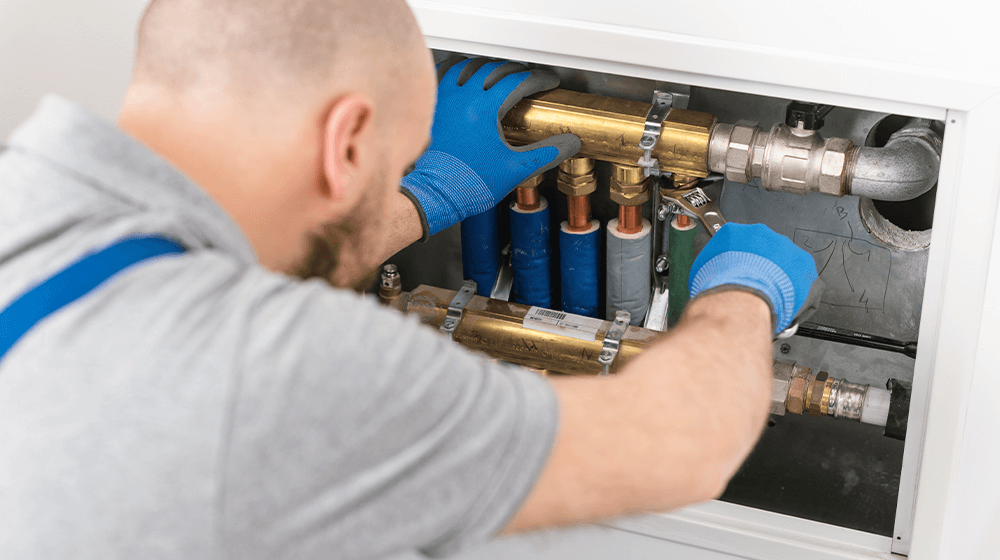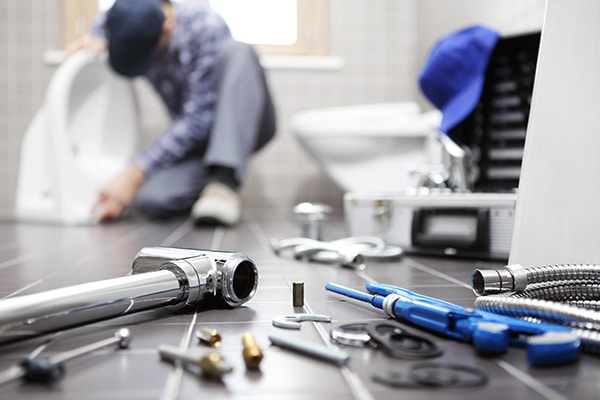Are you on the lookout for facts and techniques on The Future Of Plumbing: Trends And Technologies To Watch?

Introduction
The pipes market is undertaking a transformative stage driven by technological innovations and expanding concerns for sustainability and performance. This short article discovers emerging fads and advancements shaping the future of pipes.
Regulatory Landscape
Regulative frameworks play a vital role fit the adoption of pipes innovations, with requirements and codes governing whatever from water performance to product safety and security. As technologies remain to evolve, regulative bodies have to adapt to make sure customer protection and ecological stewardship.
Future Expectation
The future of pipes is identified by continued advancement and assimilation with other markets such as IoT, renewable resource, and structure automation. By embracing sustainable techniques, leveraging emerging innovations, and prioritizing user-centric layout, the plumbing industry is poised to attend to the evolving needs of society while lessening its ecological impact.
Increased Fact in Pipes
Augmented Fact (AR) technology is transforming plumbing by giving professionals with real-time visual guidance for fixing and fixing jobs. AR-enabled clever glasses or mobile applications overlay electronic details onto the physical setting, assisting plumbing professionals imagine pipeline layouts, identify surprise leaks, and perform repair work with accuracy.
Effect of 3D Printing
The introduction of 3D printing has presented new opportunities in producing plumbing parts. From custom-designed fixtures to detailed pipeline fittings, 3D printing enables rapid prototyping and on-demand manufacturing, decreasing lead times and enabling better personalization in pipes style.
Health And Wellness Characteristics
In response to increased concerns for health and wellness, pipes fixtures are integrating features such as antimicrobial surfaces, touchless procedure, and self-cleaning systems. These technologies not only boost hygiene yet additionally promote customer comfort and convenience.
Hygiene-focused Components
Touchless taps, self-sanitizing toilets, and antimicrobial surfaces are coming to be significantly prevalent in residential and commercial setups, minimizing the threat of bacterium transmission and advertising a cleaner, much healthier setting.
Water Quality Surveillance
Developments in water top quality monitoring innovations allow home owners to check the pureness and security of their water system in real-time. Smart water high quality sensors can detect contaminants, pH degrees, and temperature variations, encouraging customers to take proactive steps to make sure water safety and security.
Remote Pipes Providers
Remote diagnostics and virtual support are reinventing the method pipes solutions are supplied. Via video clip conferencing and remote accessibility modern technologies, plumbings can fix problems, offer support for DIY repair services, and also carry out remote assessments, using better access and convenience to property owners.
Difficulties and Opportunities
While plumbing developments hold enormous pledge, they likewise present challenges such as data personal privacy problems, regulative compliance, and the requirement for labor force training. Resolving these obstacles calls for partnership between industry stakeholders and regulative bodies to make sure safe and responsible execution of brand-new modern technologies.
Smart Plumbing Equipments
Including smart modern technology right into plumbing systems makes it possible for remote monitoring, leak discovery, and automated upkeep. Smart sensors and IoT (Web of Points) gadgets allow home owners and plumbing technicians to check water use and discover issues in real-time, leading to much more reliable source administration and aggressive maintenance.
Water Efficiency Solutions
With enhancing focus on water preservation, ingenious solutions are being established to decrease water waste in pipes systems. High-efficiency components, greywater recycling systems, and smart irrigation controllers are amongst the modern technologies helping customers decrease their water impact while preserving comfort and benefit.
Lasting Products
The change towards sustainability includes plumbing products, with a growing preference for environmentally friendly options. Biodegradable piping materials, such as PEX (cross-linked polyethylene) and HDPE (high-density polyethylene), deal toughness and resistance to rust without endangering environmental stability.
Anticipating Upkeep
Anticipating maintenance strategies utilize information analytics and artificial intelligence algorithms to expect and stop pipes concerns prior to they take place. By analyzing historic information and efficiency metrics, anticipating upkeep formulas can recognize patterns and anomalies, making it possible for aggressive interventions to avoid costly repairs and interruptions.
Final thought
Finally, the future of plumbing is specified by a convergence of modern technology, sustainability, and user-centric layout. By embracing smart services, sustainable products, and aggressive upkeep techniques, the plumbing industry can enhance efficiency, promote safety, and contribute to a much more lasting future.
Plumbing Industry Trends You Need To Know
Smart technology in plumbing
Homeowners want to be able to manage their homes from their phones. The technology exists to make that happen. From smart toilets to leak detector devices, the whole plumbing system can be managed on an interconnected network made up of sensors, IoT devices, and machine learning algorithms.
This allows for wireless control to turn appliances on and off, automate routines, and access advanced monitoring to track water usage and flag potential issues. Smart technology streamlines water consumption, maintenance and energy usage, creating a more efficient system.
Green plumbing
The data analysis possible with smart technology not only improves convenience and cost-effectiveness but also fulfills a high-priority customer desire – sustainability. Consumers are very aware of their impact on the planet and want plumbing solutions to reduce damage and support sustainability. Eco-friendly plumbing solutions are already starting to emerge.
Customers can opt for low-flow toilets, water-saving faucets, and connections to sustainable energy sources. Beyond monitoring water consumption, customers can conserve water through the installation of greywater systems. This is a system that collects water that has been used but is still clean enough for some household uses such as toilet flushing.
Shorter product pipeline
To keep up with modern plumbing, plumbers need modern tools that enable them to complete jobs more efficiently. One technology making strides in this area is 3D printing. By 3D printing key plumbing fixtures, plumbers can reduce wait times even for specialized fixtures. It minimizes delays often seen in traditional manufacturing that frustrate customers and prevent plumbers from taking on more work.
Off-site repairs
Augmented reality is making a splash in many industries including plumbing. Plumbers can map a building online so they can explore the plumbing system through augmented reality, identifying areas of maintenance and repair completely digitally. This technology can be applied quite widely in plumbers’ work including planning installations and training new recruits. It’s safer, smarter and more efficient.
Low-footprint materials
Another way for plumbing companies to reduce their environmental footprint and meet the customer demand for sustainability is by using recycled materials in their work. The products they source and manufacture such as pipes, fixtures and faucets can be made from recycled materials. This saves the planet while being just as effective.
Onsite water purification
Additionally, plumbing companies can be advocates of water conservation and ease the financial and environmental concerns of customers by offering water purification systems. New water purification technology such as reverse osmosis systems and UV systems make it possible for homeowners and business owners to thoroughly cleanse water, removing contaminants onsite. This means the water can be safely reused in more ways than greywater can be, establishing a water recycling loop.
Tankless water heaters
Another innovation of modern plumbing is tankless water heaters. The idea is that the water is heated on demand as it runs through the system instead of being heated in a water tank. This is more energy efficient and therefore cost-effective and eco-friendly because water isn’t heated needlessly.

I ran across that article about Innovative Plumbing Trends Transforming Construction when surfing the web. Sharing is nice. Helping others is fun. Thanks for your time spent reading it.
Call